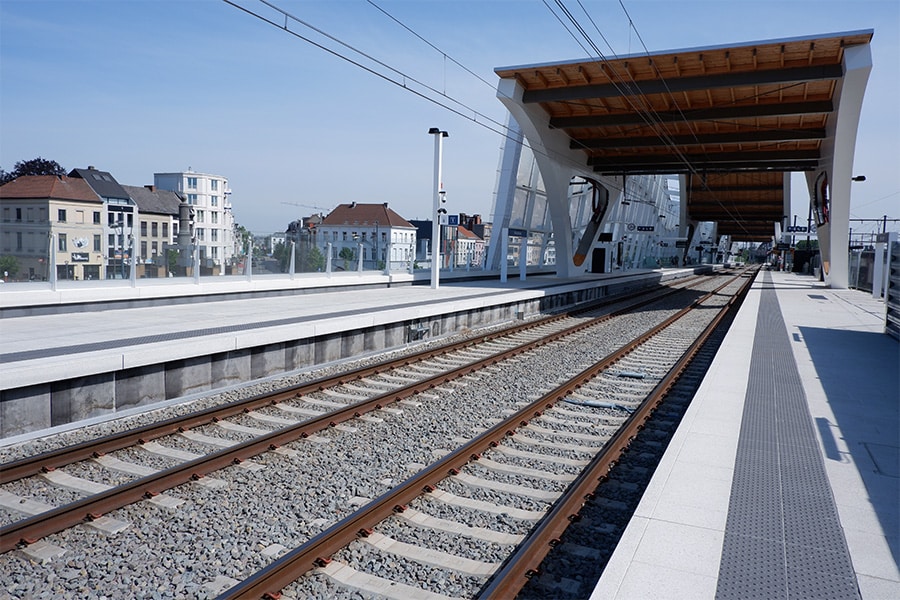
Concrete & steel in legal perspective
Pouring concrete in the rain and legal discussions
Pouring concrete during rain does not have to be a problem. It usually only becomes problematic when there is heavy rain causing the concrete mixture to dilute or crater. But what if the concrete is poured with heavy rain and then there are defects in the concrete? Then the necessary (legal) discussions naturally arise.
A recent decision of the Council of Arbitration in Construction Disputes dated August 23, 2023 (No. 37,601) is a telling example of such discussions. Among the issues discussed are (i) the warranty issued by the subcontractor, (ii) the quality of the concrete supplied by the general contractor, (iii) the requirement, according to the subcontractor, by the general contractor that the concrete pour had to proceed despite the rain, and (iv) the approval of the concrete work by the general contractor.
The case involved a concrete work for the substructure of a parking basement and a tunnel for the new construction of 35 apartments. The work was subject to the Stabu Standard 2012 and UAV 2012. After completion, there was wear on the top layer of the ramp which exposed the heating pipes and caused the top layer to crumble. Furthermore, the main contractor had discovered hollow spaces in the ramp which, according to the main contractor, meant that repairing the top layer was not sufficient. It further appears that there is localized poured seams between the underlayment and the top layer of the ramp.
Surface wear
The arbitrator begins by noting that based on the warranty issued, the subcontractor is required to repair the defects in the ramp on first notice and at its own expense unless the subcontractor makes a plausible case that the defects are not attributable to it. The subcontractor does not dispute that it issued a warranty, but takes the position that the defects are not attributable to it.
First, there was discussion about the quality of concrete supplied by the general contractor. The arbitrator notes that email correspondence shows that the main contractor supplied concrete of grade C30/37 XC3 for the top layer of the ramp. This concrete is suitable in principle and subcontractor has not made it plausible that there are defects in the concrete supplied. This quickly settled this discussion.
Next, the subcontractor claims that the defects on the ramp occurred because, while it was raining on the day the pour was scheduled, the general contractor demanded that the subcontractor pour the topsoil anyway. That rain was much worse than predicted, which prevented the topsoil from sufficiently curing and washed the Quartz out of the fresh concrete.
The arbitrator considers it plausible that the topsoil was damaged during execution as a result of pouring during significant rainfall. That is a performance error for which the subcontractor is liable even apart from the issued warranty. The subcontractor has not made it plausible in the face of the main contractor's challenge that the main contractor in any way forced it to pour the ramp at the scheduled time despite the rainfall predicted in the weather reports. It is eminently the responsibility of the subcontractor to decide whether the weather conditions are suitable for the work to be performed at that time. If they are not, it must not perform the work or take appropriate measures to prevent damage. For example, by erecting a tent structure during the pour. According to the arbitrator, the fact that the main contractor's QA/QC manager approved the quality of the subcontractor's work both before the concrete pour and after the concrete pour was completed does not change this.
The arbitrator rules that the subcontractor is liable for the defects in the top layer of the ramp and the subcontractor will have to repair it under the warranty.
Landfill
Although in principle there should be no pour seams, according to the arbitrator, there is no indication that this pour seam will affect the life and/or functionality of the ramp. The claim for repair of the pour seam or any compensation is therefore rejected.
Cavities in the concrete
An expert report submitted concludes that there are voids in the concrete at 1% to 3% of the ramp surface. In principle, the concrete should have been poured during execution such that no significant cavities would occur in it. Therefore, the mere presence of the cavities could perhaps be formally classified as a defect, according to the arbitrator. However, the size and number of the cavities observed are so small that there is no question of their affecting the life or functionality of the ramp. These cavities are not as large as those previously discovered, which were indeed likely caused by hydro demolition applied in the course of repairing the heating pipes present, as the subcontractor has also consistently claimed.
Insofar as the small cavities in the concrete can be classified as a defect, the client's interest to be served by repair does not justify the costs involved, and since no damage results from the cavities, there can be no compensation for this part either.
Conclusion
Although the subcontractor will not be held responsible for repairing the pouring seam and voids in the concrete, he should be responsible for restoring the top layer. A good and diligent contractor could have avoided this by either not pouring during the heavy rain, or making provisions such as erecting a tent, or putting in writing that the general contractor required the concrete pour to proceed despite the rain and lack of provisions.
Joost Haest Severijn Hulshof lawyers



